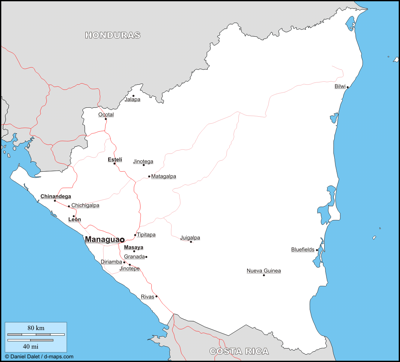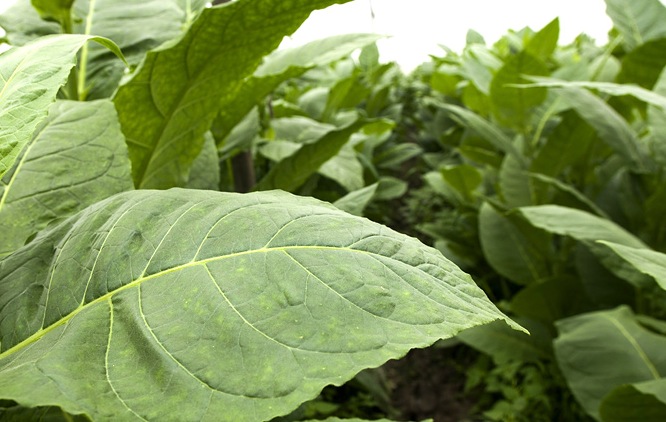Early last year, Nicaragua’s near flawless rise to the top of the cigar world experienced arguably its largest problem in the last decade and a half. In the northwestern region of Jalapa, the part of the country that borders Honduras—tobacco plants were dying midway through the season with the undersides of the leaves ravaged in a fashion entirely new to Nicaragua’s tobacco farmers.
“People just didn’t know what it was last year,” said Nicholas Melillo, director of tobaccos for Drew Estate. By the time the growing season wrapped up in the spring, reports across Jalapa—Nicaragua’s biggest growing area—varied about how badly things were. Most larger farmers reported minimal, if any, damage, while certain smaller farms reported losses as high as 35%.

The culprit would be discovered to be bacteria cockerelli, also known as the potato psyllid or locally as paratrioza, a small insect most famous for ravaging potatoes, as well as tomatoes and other plants. It’s a tiny insect native to North America that has gained notoriety due to its association with the Zebra chip, a new disease that has caused millions of dollars in damage to potatoes throughout the world.
It is however not unique to Jalapa’s tobacco. Last year there were murmurs of minimal impact in Connecticut, while scientific texts from the 1970s indicate bacteria cockerelli affected tobacco plants in California.
The process of how it ravages tobacco is not much different from how it affects other plants. As the psyllid enters the nymph stage following its birth, it begins to attack the phloem, the part of the plant responsible for delivering essential nutrients like sugar to the rest of the plant. The nymph—which is essentially undetectable due to its size—feeds on the underside of the leaves, using it as natural shade and protection. Interestingly, bacteria cockerelli begin to invade plants early in the growing season, meaning farmers begin noticing the results before harvesting. The results are tragic—tobacco plants ravaged, dying and unusable.

Tobacco plant ravaged by bacteria cockerelli.
While the insect was discovered last year, urgency regarding the bacteria didn’t really begin until this year. The reality is the insect had little impact in Jalapa overall as major farms reported minute losses. A representative from Plasencia, one of Nicaragua’s largest growers, told halfwheel its farms were affected so minimally, the loss was seen as virtually inconsequential.
Coming into this year’s season the general belief was better basic farming techniques would defeat the paratrioza cockerelli. The insect was thought to be so devastating for certain farms because farmers were caught off-guard, unable to quickly identify the issue and such unable to adequately respond. The reality was, by the time they found out, the plants were already ravaged. As the new harvest was planted, farmers had some knowledge of the problem and were at least aware of its possible impact—and that was believed to be enough.
“It looks like a virus, acts like a virus; so people thought it was a virus, but it’s not,” said Melillo. “It’s a bacteria.”
Once the issue began appearing again, the mood changed.
At a January 14 meeting at Drew Estate’s factory, Melillo, Gustavo Cura of Oliva Tobacco Company, Universal Leaf’s Fritz Bossert and Chief Agronomist Michael Hartley discussed ways to deal with the bacteria. Amongst the solutions were better-timed fumigation, proper transportation, wind barriers and the implementation of trap crops. The lattermost technique involves planting other crops, like eggplant, around the tobacco leaves with the sole intention of attracting the psyllids to those plants, hoping the insects feed off of the decoy plants and leave the tobacco plants alone.

While the seriousness in regards to the response to the insect has increased noticeably from 2012, the overall effects of both the psyllid and the response remain to be seen.
“I think this year is going to determine whether you are going to see it in the future,” said Melillo. “Everybody is aware of it this cycle, everyone is taking precaution. If it doesn’t affect as much as last year, it’d be a good sign, but if still wreaking havoc, it won’t be a good sign.”
Some time between late February and March the impact of the bacteria will take shape, but both the origins and the future of paratrioza are anything but clear. While the consensus is that chili pepper farmers are responsible for the introduction of the psyllid into Jalapa, it remains at best a theory without significant evidence.
As for the future, a debate remains about whether paratrioza will become part of every growing season. There are questions over what—if any—response the local agriculture board will have given the insect’s reappearance. Given the unique impact on smaller farmers, some wonder if the economic resources and organization for adequate prevention exists.
In Estelí, Nicaragua’s cigar-producing city and arguably the capital of the cigar world, precautions are being taken on some farms, but most are simply waiting for the news from Jalapa.
There’s a lot to be thankful for: the problem still seems small, this year’s crop looks good, the problem is still isolated and perhaps most importantly—the cost of tobacco was largely unaffected. Still, few manufacturers want to talk about the issue in Jalapa. Some attempt naïvety, others claim their tobacco supply was completely unaffected, but it’s far from a secret in Estelí. There was a problem in Jalapa last year; the problem in Jalapa is back.
A version of this story first appeared in the February 4, 2013 edition of The Newsletter.
(Map via d-maps.com. Used with permission.)



